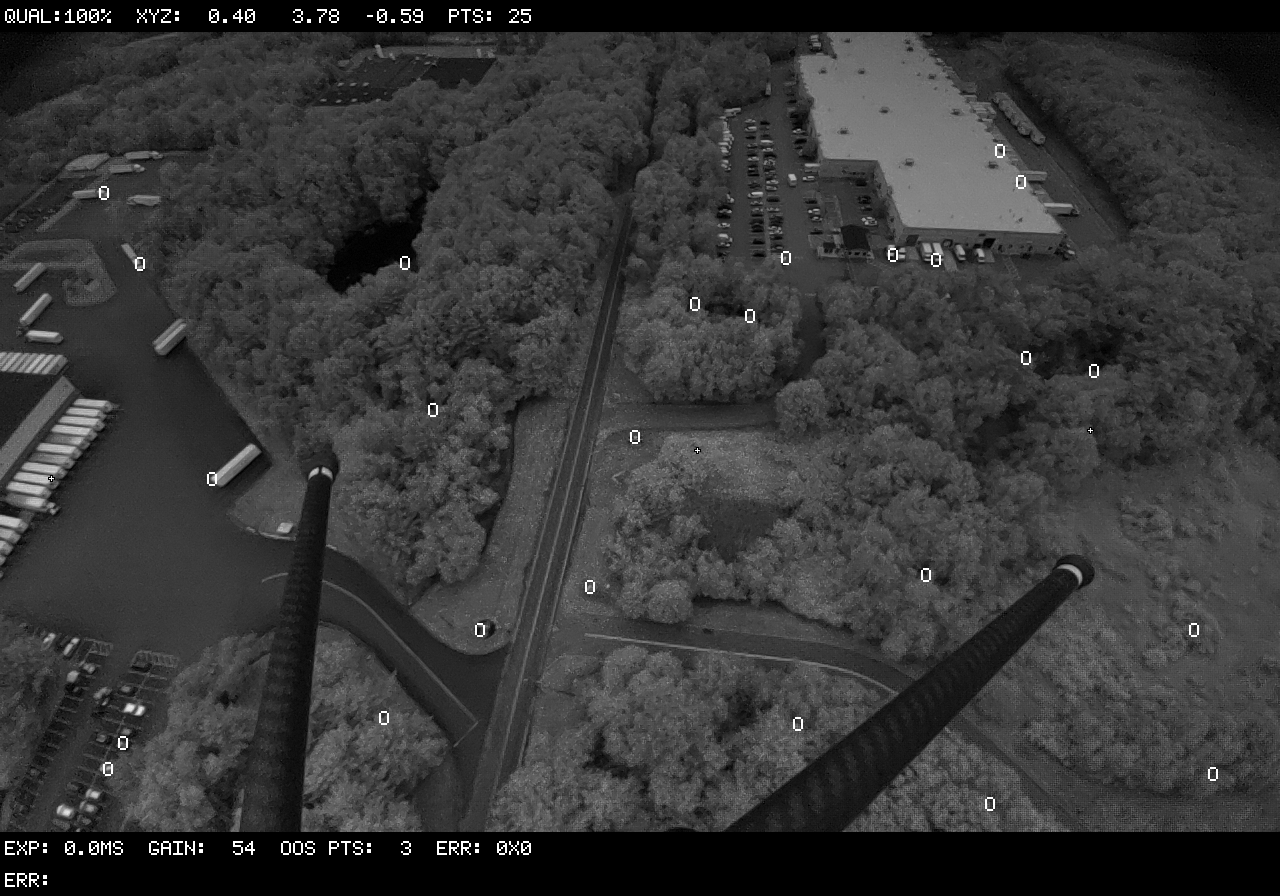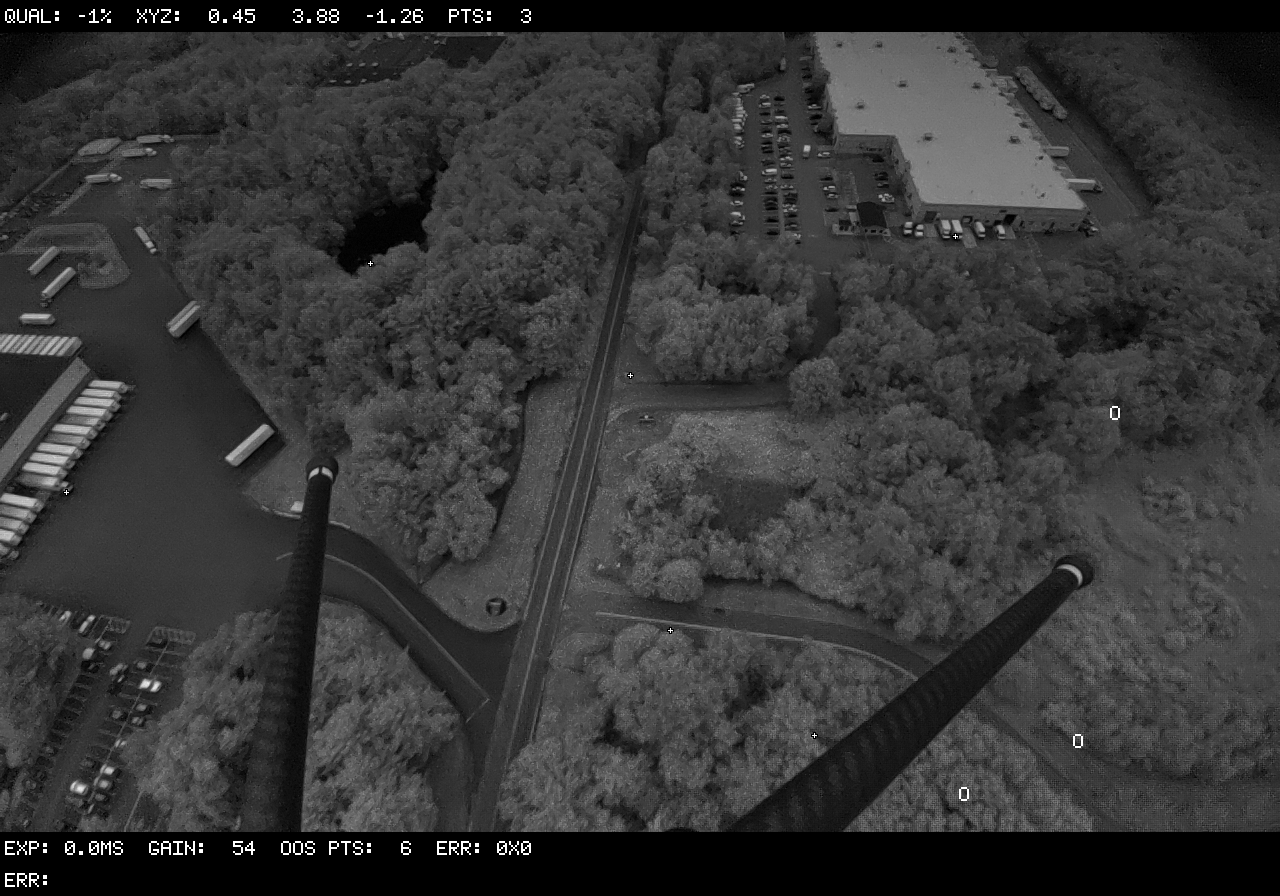OV9782 VIO parameters
-
Folks! Making some good progress here with the OV9782 camera and VIO. Flight looks solid. I just realized I never touched the qvio server parameters to make it work with this camera besides the pipe input. Do you have any recommendation for "cam_noise_std_dev", "min_std_pixel_noise" or "fail_high_pixel_noise_points" for this camera?
Cheers!
-
@david-moro . Quick follow-up.
We are doing testing up to 400ft with moderate success. One thing we notice is that the qvio algorithm can struggle to converge after a reset. I attach two picture. On the first one, right after the reset, there are 25 points being tracked.

A few seconds later, this drops to 3 points. The vehicle barely moved between frames.

A few seconds after this the qvio reset again. This behavior is very common once the first reset happens. Up until that point, if we take it easy, we can fly at 400ft without any issues. Could this be related to mistuned parameters? In particular, what is the effect of cam_noise_std_dev, min_std_pixel_noise and fail_high_pixel_noise_points? Can those be used to trade robustness for accuracy?
Thanks!
-
You are definitely pushing the bounds of the system, which is great but we probably won't have all of the answers.
You can try this parameter: en_auto_reset
You can see all of the parameters here: https://gitlab.com/voxl-public/voxl-sdk/services/voxl-qvio-server/-/blob/master/server/config_file.h?ref_type=heads
-
@Moderator. en_auto_reset is true for these flights. What we see is that once a reset kicks in, it has a hard time staying stable. My question above is more along the lines of how to make the vio algorithm not drop points so aggressively. That is what the images above show.
Cheers!
-
@david-moro Have you made any progress on this? I'm also willing to do the same.
-
@SMRazaRizvi We did not. But the more I look at the qualcomm API for mvVISLAM the more I think there is aren't very many knobs to turn.
-
@david-moro That is my impression too, that and, it does not seem to be all that robust in general. I am very interested in using an open source VIO solution, and build it to be a mostly drop-in replacement for Qvio. I need it for high-altitude flight too, in mostly texture-less environments, a most robust solution seems necessary. I only just started looking into which methods could be interesting to use, and came across DM-VIO: Delayed Marginalization Visual-Inertial Odometry which seems to be very modern and robust. The paper for this states that it was run in real time on a 2013 mobile i7 at 2.3GHz, so I am hopeful that it could run on the VOXL 2. I would be interested in following along if any of you decide to go in another direction than Qvio.